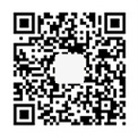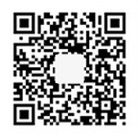LED in the advertising field
Date:2018-04-16Views:2444Tags:
LEDs can save the country and users a lot of electricity, and save a lot of man-hours for contractors. The development of LED light-emitting diode application technology has added new vitality to the highly competitive advertising industry. Its unique, different lighting situation has been widely used in the production of advertising products. Different specifications of the LED have different light angles and different brightness. So, how to choose the right LED for different products so that it can not only maximize its effectiveness, but also minimize the cost? Now we look at the professional advice of Nanjing Biya Digital Technology Co., Ltd.
LED lights in the use of luminous characters and the use of matters needing attention
The three-dimensional luminous characters mainly have the following requirements for the light source:
First, the complexity of the fonts and the different specifications of different projects require that the light sources have the versatility that is not limited by the typeface;
Second, due to the installation of completed luminous characters maintenance is extremely inconvenient, in order to reduce maintenance costs, requires a long life of the light source;
Third, have enough brightness
The LED lighting module produced by Nanjing Biya Engineering Department for the above requirements has the above functions. There are two types of LED light sources that Bia offers for stereo letters: piranhas and straw hats. Piranha light module is suitable for luminous characters with a height of 8-10cm. In general, the piranhas of the ¢3 and ¢5 heads have light angles of 90 degrees and 120 degrees. At this distance, the piranha lighting module applied to the blister character can completely radiate light. Not only does it save the number of modules, but it is also justified by the brightness test. For short-shaped, word-shaped plastic luminous characters and carved luminous characters, the flat piranha module with the luminous angle of about 160 degrees and the straw hat light module should be used. Larger areas of light radiation can reduce the amount of modules, while shorter walls increase the brightness of the font. The organic combination of the two follows the law of conservation of energy and reflects the importance of proper choice of light emitting diodes.
It is worth noting that in the process of using LED lighting modules, we must pay attention to the problem of voltage drop. Never do only one loop, from the first to the end. This will not only result in inconsistency in brightness due to the difference in voltage between the first and the tail, but also cause a problem that the single circuit current will burn the circuit board too much. The correct approach is to parallel as many loops as possible to ensure reasonable distribution of voltage and current. In addition, if you want to use anti-corrosion materials inside the character cavity, it is best to use a white primer to increase its reflection coefficient.
LED Application in Ultrathin Signage
The ultra-thin luminous signage was born on the basis of improving the utilization rate of the business premises. The thickness of the conventional ultra-thin light-emitting signs and ultra-thin light boxes is approximately 1.5-3.0 cm. In 2004, based on this foundation, Nanjing Biya Company independently developed a set of ultrathin signage with a thickness of 0.8-1.5cm. This product uses a variety of technologies such as light guide, injection molding, engraving, and backlighting. It is characterized by its smooth surface, no engraved bumps, and even light emission without strings. The layout can be infinitely large, small to department licensing, and can be produced by reaching the highway signs.
This type of ultra-thin placard can be selected according to the customer's required thickness and the size of the layout. Thickness of 8mm or less, ultra-thin light-emitting signage with an area under 450cm2, optional SMD light-emitting module; ultra-thin light-emitting signage between 8mm-10mm, area 500cm2-400cm2, pixelable LED module Large ultra-thin luminous signs with a thickness of more than 10mm should use ultra-highlighting light-emitting modules whose luminous angle is within 30 degrees.
In short, the vast majority of advertising industry colleagues in the use of LED application technology to produce products, in addition to considering the stability of the LED, but also according to the requirements of the product to determine the LED's light angle, brightness and the wavelength between the tube and allow Within range. Only a reasonable choice of different specifications of the LED can ensure the quality of the product is up to standard, and at the same time, the cost is minimized.




 Follow WeChat
Follow WeChat







